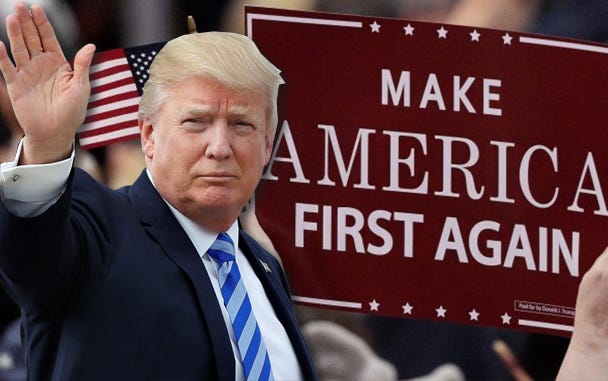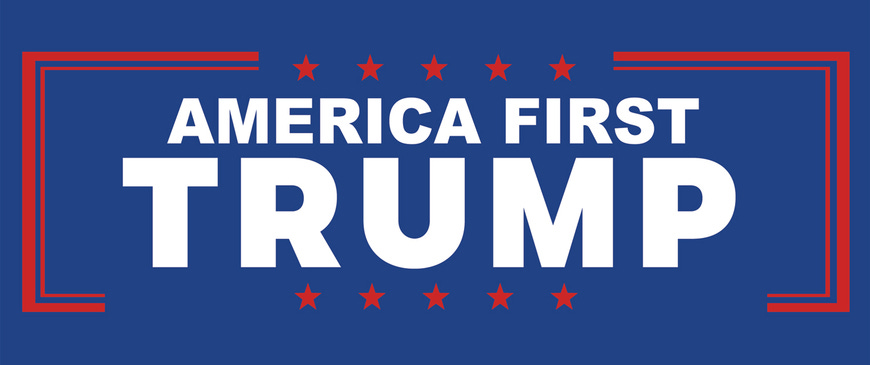How "BAHA" (2017) Trump's transformed to "America First" (2025) in second-term Trump's administration with impact U.S. immigration policy
Intro
“The American worker built this country and now it’s time for American workers to have a government for the first time in decades answers to them,” Trump said at his election rally.
Current rules associated with America’s trade deals and immigration policies unfairly place American companies and workers at a disadvantage.
A BUY AMERICAN AGENDA: President Donald J. Trump is taking action to enforce laws promoting American industry.
A HIRE AMERICAN AGENDA: President Trump is making sure the immigration system isn’t abused to displace hard-working American workers for cheaper foreign labor.
KEEPING HIS PROMISE TO THE AMERICAN PEOPLE: President Trump promised that Buy American – Hire American would be a signature foundation of his Administration.
We will have two simple rules when it comes to this massive rebuilding effort, buy American and hire American, President Donald J. Trump (c)
“Buy American and Hire American” in 2017
On April 18, 2017, President Trump signed the Buy American and Hire American Executive Order, which seeks to create higher wages and employment rates for U.S. workers and to protect their economic interests by rigorously enforcing and administering our immigration laws. It also directs DHS, in coordination with other agencies, to advance policies to help ensure H-1B visas are awarded to the most-skilled or highest-paid beneficiaries.
President Donald Trump vowed on the campaign trail to do everything in his power to benefit American workers. “We will build American, buy American and hire American,” he said during a rally in August 2017.
Revocation of BAHA Executive Order
On January 25, 2021, President Biden signed an Executive Order which effectively revoked President Trump’s Buy American and Hire American Executive Order (commonly known as “BAHA”).
The BAHA Executive Order further resulted in a sharp increase in requests for evidence (RFEs) and case denials across various case types
Trump’s 2.0 America First in 2025
America First Policy Directive to The Secretary of State. This order directs foreign policy to “always put America and American citizens first” and may be a restatement of the first Trump administration’s Buy American, Hire American (BAHA) Executive Order 13788. The policies resulting from BAHA resulted in significant scrutiny of employment-based visas, new difficulties for U.S. businesses to hire foreign talent, and increased wage requirements for some employment-based visa classifications.
Today, what unites “America first” populists is a rejection of the idea that the country’s self-interest is inextricably bound to the prosperity and liberty of the broader world.
According to this way of thinking, the world outside is full of more threats than opportunities, and America would do well to guard itself against pernicious influences from abroad. Worse, America’s generosity is constantly being abused by Asian exporters, Middle Eastern miscreants and European free-riders.
The administration’s resurrected “America first” rhetoric implies that the internationalism and “enlightened self-interest” that built the postwar order, and that was still recognizable in Obama’s foreign policy, was a gigantic mistake.
It is a vision that rejects the give-and-take of take of international agreements, the generosity of foreign aid and the conviction that what is good for our friends is good for America. It replaces these ideas with a narrow understanding of self-interest, one that risks exchanging long-run benefits for short-term satisfaction.
Take, for example, the Trump administration’s trade policy. During his first 10 days in office, the president took three extraordinary steps in a protectionist direction.
Non Immigration H1B visas
On Dec. 28, 2024, Trump surprised many by declaring his support for the H-1B program, calling himself a “believer in H-1B.” This followed his appointment of Sriram Krishnan as senior policy adviser on artificial intelligence — a decision that drew criticism due to Krishnan’s advocacy for “unlocking skilled immigration,” a stance seemingly at odds with past policies.
This shift in tone could align immigration policy with industry needs, offering opportunities to address talent gaps in critical sectors. As debates continue, the H-1B program’s role in driving innovation and bridging workforce shortages remains essential — a development employers relying on foreign talent cannot afford to overlook.
Introduced in 1990, the H-1B program allows U.S. companies to hire highly skilled foreign nationals for “specialty occupations” requiring at least a bachelor’s degree. It has played a pivotal role in filling talent gaps in technology, healthcare, life sciences, and finance. By enabling access to global talent, the program has been instrumental in sustaining U.S. dominance in technology and innovation. Leading companies depend on H-1B workers, many of whom occupy positions in science, technology, engineering, and mathematics, or STEM, fields. While the majority of STEM positions are filled by U.S. workers, the share of foreign workers — including H-1B visa holders — has more than doubled to 26 percent between 1990 and 2023 — a testament to the program’s importance for maintaining America’s competitive edge.
Critics of the H-1B program have long argued that it encourages cheap labor and undermines the competitiveness of U.S. workers. They also have voiced concerns about the perceived dependency of H-1B workers on their employer-sponsors, which they allege limits the mobility of these workers.
Elon Musk, who spent hundreds of millions of dollars to help elect Trump, is the CEO of Tesla, which this year alone has requested and received US government permission to hire about 2,000 highly skilled foreign workers. Musk’s Neuralink startup as well as X Corp also received approval for such laborers.
Despite criticism, the H-1B program remains a cornerstone of the U.S. workforce strategy, with demand continuing to outpace supply. For FY 2025, USCIS received 470,342 registrations for just 85,000 available visas — a testament to its enduring popularity and importance in addressing skills gaps.
EB-1\NIW, O-1, L-1 visas changes
Trump’s “Protecting the United States from Foreign Terrorists and other National Security and Public Safety Threats” order reinstates enhanced vetting for those applying to enter the US.
The order seeks to ensure that all individuals “are vetted and screened to the maximum degree possible”, including those seeking employment-linked H-1B, L-1, and O-1 visas, as well as immigrant visas like EB-1, EB-2, and NIW.
The order also directs the Departments of State, Homeland Security, and Justice to establish stringent screening standards, particularly for individuals from high-risk countries. Within 60 days, agencies must identify nations for entry restrictions and review the actions of individuals from those nations already in the US.
Agencies have been also tasked with strengthening identity verification for refugees and stateless individuals to ensuring visa programmers are not exploited.
With his “Initial Rescissions of Harmful Executive Orders and Actions”, Trump has scrapped numerous executive orders issued under the Biden administration, including expanded immigration pathways for AI and STEM talent, and those that reduce administrative obstacles to immigration benefits and the residency process.
“The impact on US employers could mean loss or inability to retain AI and STEM talents [due to] lengthier immigration adjudication process as seen under Trump 1.0,” says Jackson Lewis’ Minnie Fu.
Source:
(1) https://theconversation.com/what-does-america-first-mean-for-american-economic-interests-71931
(2) https://www.foxbusiness.com/politics/trumps-first-speech-to-congress-buy-american-hire-american
(3) https://www.maynardnexsen.com/publication-trump-2-0-executive-orders-that-impact-employment-based-visas
(4) https://www.whitehouse.gov/presidential-actions/2025/01/america-first-policy-directive-to-the-secretary-of-state/
(5) https://www.jacksonlewis.com/insights/h-1b-visas-will-trump-20-be-turning-point-employers-needing-skilled-foreign-workers
(6) https://trumpwhitehouse.archives.gov/wp-content/uploads/2020/10/Donald-J-Trump-Buy-American-Hire-American-President.pdf
(7) https://www.hklaw.com/en/general-pages/trumps-2025-executive-orders-chart
(8) https://www.uscis.gov/archive/buy-american-and-hire-american-putting-american-workers-first
(9) https://www.federalregister.gov/documents/2017/04/21/2017-08311/buy-american-and-hire-american
(10) https://www.aila.org/library/administration-rescinds-buy-american-and-hire
(11) https://theglobalmobilitylawyer.com/news/trumps-america-first-philosophy-begins-shape




